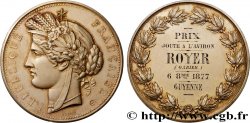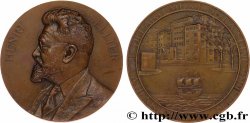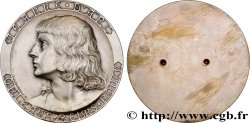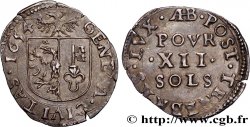Live auction - fme_425574 - III REPUBLIC Cadre de 45 médailles unifaces en bronze
You must signin and be an approved bidder to bid, LOGIN TO BID. Accounts are subject to approval and the approval process takes place within 48 hours. Do not wait until the day a sale closes to register. Clicking on "BID" constitutes acceptance of the terms of use of cgb.fr private live auctions.
Bids must be placed in whole Euro amounts only. The sale will start closing at the time stated on the item description; any bids received at the site after the closing time will not be executed. Transmission times may vary and bids could be rejected if you wait until the last second. For further information check the Live auction FAQ
All winning bids are subject to a 18% buyer’s fee.
All winning bids are subject to a 18% buyer’s fee.
| Estimate : | 2 000 € |
| Price : | 920 € |
| Maximum bid : | 1 259 € |
| End of the sale : | 01 August 2017 19:24:49 |
| bidders : | 2 bidders |
Type : Cadre de 45 médailles unifaces en bronze
Date: n.d.
Mint name / Town : France
Metal : bronze
Rarity : R3
Coments on the condition:
Cadre imposant de 80 par 54 cm, avec 45 médailles unifaces encadrées anciennement, avec 20 cabochons en plâtre doré, sur un velours bordeaux. Cadre en bois, d’aspect loupe et doré. Cadre nécessitant une restauration, cabochons abîmés
Predigree :
Ce cadre provient d’une collection américaine
Obverse
Reverse
Commentary
Ensemble particulièrement intéressant, de 45 médailles, montées anciennement sur velours. Ce travaille typique de la 3e République remonte à la fin du XIXe siècle ou au début du XXe siècle :
- Martinus Bucerus (1491-1551), moine et théologien.
- Maria Christina de Bourbon (1806-1878), reine d’Espagne, épouse de Ferdinand VII d’Espagne.
- Franz Joseph Haydnn (1732-1809), compositeur autrichien qui incarne le classicisme viennois au même titre que Mozart et Beethoven, les trois compositeurs étant regroupés par la postérité sous le vocable de « trinité classique viennoise ».
- Lazare Hoche (1768-1797), un général français de la Révolution.
- République française, avec la tête de Cérès.
- Philippe, roi d’Espagne.
- Jean Varin (1607-1672), graveur de monnaies et médailleur.
- Louis-Philippe, de 1830.
- Henri de la Tour d’Auvergne de Turenne (1611-1675), militaire français.
- Franklin Benjamin (1706-1790) et Montyon Jean-Baptiste (1733-1820).
- LA RENOMMÉE PROCLAME LE MÉRITE.
- Louis II de Bourbon Conde (1621-1686), duc d’Enghien.
- Naissance du futur comte de Chambord (Henri V), le 29 septembre 1820.
- Charles Quint (1500-1585).
- Pie IX (1792-1878), pape.
- Pierre Jeannin (1540-1623), homme politique français.
- Jules Hardouin-Mansart (1646-1708).
- Napoléon Ier Empereur.
- Isabelle II, reine d’Espagne (1830-1868).
- Jean-Baptiste Collin, comte de Sussy (1750-1826).
- Eugène Sue (1804-1857), écrivain français.
- Car Comes Chotek Reg Bohemiae Supremus Burgravius.
- Une représentation des indiens d’Amérique datée 1492.
- Giuseppe Garibaldi (1807-1882), l’un des “pères de la patrie” italienne.
- Notre Dame de Paris.
- République française, avec la tête de Cérès.
- Naissance du futur comte de Chambord (Henri V), le 29 septembre 1820.
- Armand Jean du Plessis de Richelieu, dit le cardinal de Richelieu (1585-1642).
- Napoléon III Empereur.
- Clément Marot (1496-1544), poète français.
- Axel Gustafsson Oxenstierna ou Oxenstjerna (1583-1654), Grand chancelier de Suède du 6 janvier 1612 à sa mort.
- Louis-Philippe Ier.
- Galilée (1564-1642), mathématicien, géomètre, physicien et astronome italien.
- Eustache Le Sueur (1617-1655), artiste peintre et dessinateur français de style baroque.
- la sculptue de H. Rude, Le Départ des volontaires de 1792, ou La Marseillaise, orne l’arc de triomphe de l'Étoile, à Paris.
- Pierre Corneille (1606-1684), dramaturge et poète français.
- Henri IV (1553-1610), roi de France.
- Miguel de Cervantes Saavedra (1547-1616), romancier, poète et dramaturge espagnol, célèbre pour son roman L’Ingénieux Hidalgo Don Quichotte de la Manche, publié en 1605 et reconnu comme le premier roman moderne.
- Bonaparte, général en chef..
- Martinus Bucerus (1491-1551), moine et théologien.
- Maria Christina de Bourbon (1806-1878), reine d’Espagne, épouse de Ferdinand VII d’Espagne.
- Franz Joseph Haydnn (1732-1809), compositeur autrichien qui incarne le classicisme viennois au même titre que Mozart et Beethoven, les trois compositeurs étant regroupés par la postérité sous le vocable de « trinité classique viennoise ».
- Lazare Hoche (1768-1797), un général français de la Révolution.
- République française, avec la tête de Cérès.
- Philippe, roi d’Espagne.
- Jean Varin (1607-1672), graveur de monnaies et médailleur.
- Louis-Philippe, de 1830.
- Henri de la Tour d’Auvergne de Turenne (1611-1675), militaire français.
- Franklin Benjamin (1706-1790) et Montyon Jean-Baptiste (1733-1820).
- LA RENOMMÉE PROCLAME LE MÉRITE.
- Louis II de Bourbon Conde (1621-1686), duc d’Enghien.
- Naissance du futur comte de Chambord (Henri V), le 29 septembre 1820.
- Charles Quint (1500-1585).
- Pie IX (1792-1878), pape.
- Pierre Jeannin (1540-1623), homme politique français.
- Jules Hardouin-Mansart (1646-1708).
- Napoléon Ier Empereur.
- Isabelle II, reine d’Espagne (1830-1868).
- Jean-Baptiste Collin, comte de Sussy (1750-1826).
- Eugène Sue (1804-1857), écrivain français.
- Car Comes Chotek Reg Bohemiae Supremus Burgravius.
- Une représentation des indiens d’Amérique datée 1492.
- Giuseppe Garibaldi (1807-1882), l’un des “pères de la patrie” italienne.
- Notre Dame de Paris.
- République française, avec la tête de Cérès.
- Naissance du futur comte de Chambord (Henri V), le 29 septembre 1820.
- Armand Jean du Plessis de Richelieu, dit le cardinal de Richelieu (1585-1642).
- Napoléon III Empereur.
- Clément Marot (1496-1544), poète français.
- Axel Gustafsson Oxenstierna ou Oxenstjerna (1583-1654), Grand chancelier de Suède du 6 janvier 1612 à sa mort.
- Louis-Philippe Ier.
- Galilée (1564-1642), mathématicien, géomètre, physicien et astronome italien.
- Eustache Le Sueur (1617-1655), artiste peintre et dessinateur français de style baroque.
- la sculptue de H. Rude, Le Départ des volontaires de 1792, ou La Marseillaise, orne l’arc de triomphe de l'Étoile, à Paris.
- Pierre Corneille (1606-1684), dramaturge et poète français.
- Henri IV (1553-1610), roi de France.
- Miguel de Cervantes Saavedra (1547-1616), romancier, poète et dramaturge espagnol, célèbre pour son roman L’Ingénieux Hidalgo Don Quichotte de la Manche, publié en 1605 et reconnu comme le premier roman moderne.
- Bonaparte, général en chef..







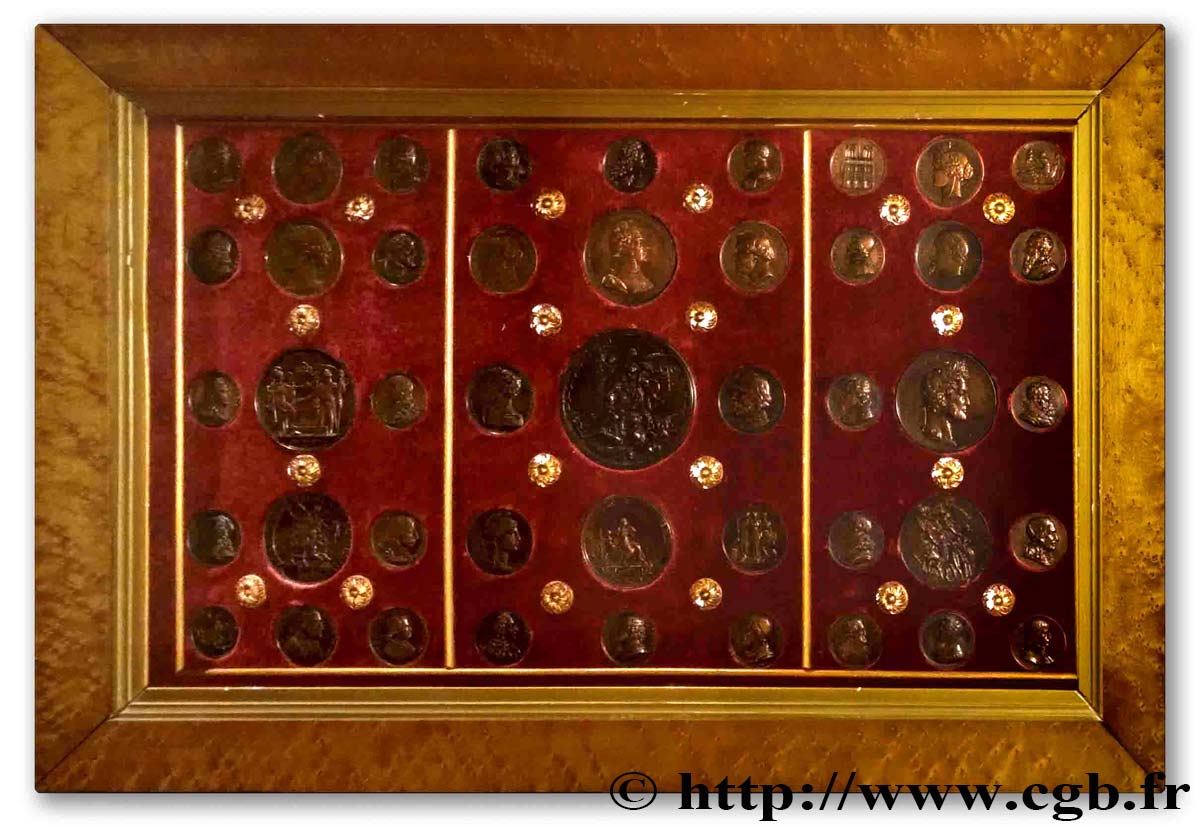
 Report a mistake
Report a mistake Print the page
Print the page Share my selection
Share my selection Ask a question
Ask a question Consign / sell
Consign / sell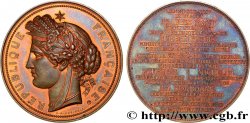
 Full data
Full data